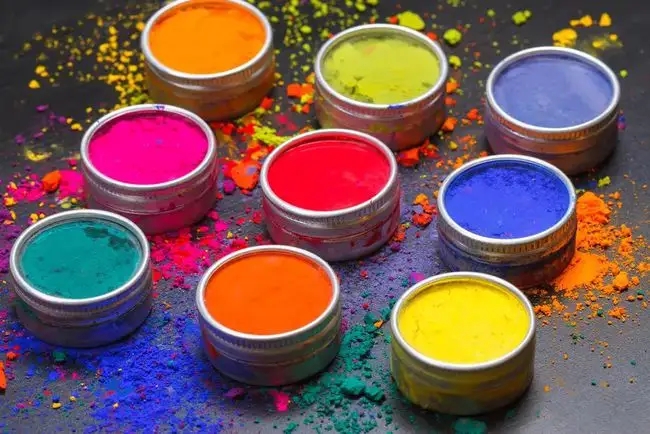Acid dyes are often sodium nitrate salts of aromatic compounds. Since such dyeing needles are usually dyed in acidic solutions, you are called acid dyes. Acid dyes are mainly used for the dyeing of wool, silk, cotton and leather, and also for the manufacture of ink, paper, soap and as a color lake.
According to different chemical structures and dyeing conditions, acid dyes can be divided into strong acid dyes, weak acid dyes, acid mordant dyes, and acid metal complex dyes.
1. Strong acid dye
This is the earliest developed acid dye, which can dye wool and leather in acid medium, also known as acid level dye.
Strong acid dyes have a simple molecular structure, low molecular weight, and contain sulfonic acid groups or cherry acid groups. Dye evenly,
When dyed with strong acid dyes, although the color is bright and the levelness is good, the dyeing is not deep, the fastness to wet treatment is not good, and it is not resistant to shrinkage. When wool is dyed in the medium, the strength of wool will be damaged. After dyeing, the wool will not feel good, and the acid fastness will also be weaker than the former. In order to overcome the adverse effects of strong acid dyes on dyed fibers, industrially improved them to produce weak acid dyes and metal mordant and complex dyes,

2. Weak acid dye
On the basis of strong acid dyes, the molecular weight is increased to produce weak acid dyes, also known as acid shrinkage-resistant dyes. The molecular structure of these dyes is slightly complex. As the molecular weight increases, the affinity for wool is greater, so wool can be dyed in a weakly acidic medium. In addition to the salt bond between the dye molecule and the wool molecule during dyeing, there is also a non-polar van der Waals attraction between the two molecules. combine with each other. Therefore, the affinity between the dye molecule and the wool molecule increases, the wash fastness of the dye is improved, and the dyeing is also deeply dyed. It has no effect on the strength of wool when dyeing, but the solubility of the dye in the dye bath is low.
3. Metal Mordant and Complex Dyes
Metal mordant refers to the use of metal mordants in the dyeing process, or the introduction of metal atoms in the dye manufacturing process, so as to achieve the purpose of improving the performance of dyes. Any acid dye that can increase the fastness after being treated with a metal mordant is called acid mordant dye,
Mording is a method of adding metal salt (such as salt or copper salt) to the dyed matter to improve the light fastness of the original acid dye. This method can also be divided into three types: pre-mordant, post-mordant, and co-mordant. Wool fiber is first treated with mordant, and then treated with acid mordant dye, which is called pre-mordant; wool is first dyed with acid dye, and then added with heavy dye. The dyed wool is called the post-mordant; the wool is dyed with acid mordant dyes and treated with heavy grid salt at the same time, which is called the same medium.
The advantages of acid mordant dyes are fastness to sunlight, washing and shrinkage, and high dyeing fastness. Discoloration occurs, so it is not easy to match colors.
Acid metal complex dye means that when preparing the dye, metal atoms have been introduced into the azo dye molecule to form a metal complex. The ratio of metal atom to dye in the molecule of this kind of dye is 1:1, so it is also called I:1 metal complex dye. When dyeing wool with 1:1 metal complex dyes, it still needs to be carried out in a strong acidic medium. Therefore, it still affects the strength and feel of wool fibers. However, since the metal complex dye molecules can form complexes with wool fiber molecules, the dyeing The light fastness of the material has been improved.

 微信扫一扫打赏
微信扫一扫打赏

